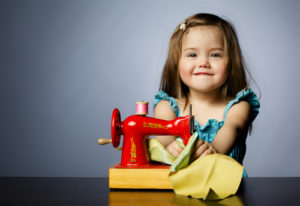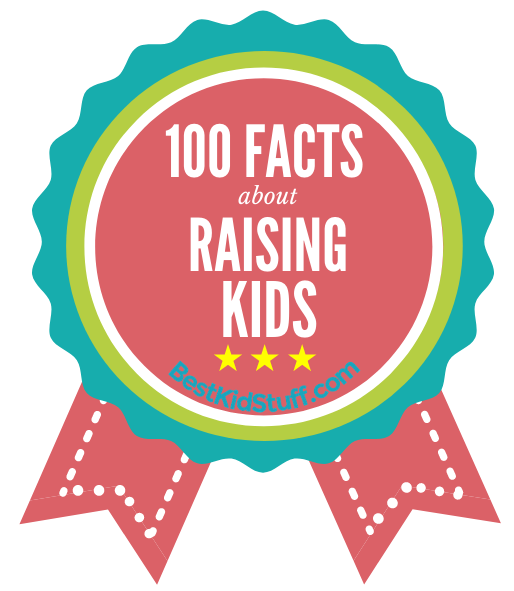
Every parent knows that raising a child comes WITHOUT a perfect formula. As kids grow up in the blink of an eye, parenting has evolved over a couple of generations.
Raising children has become more demanding in terms of attention, time, and even money. It can be the most fulfilling job in the world—but also the toughest and most challenging!
As everybody wants to be the best parent for their children, we’re listing 100 facts in the changing landscape of child-rearing in America and worldwide. We hope they help you get to know your kids better—and get useful tips on how to raise them right!
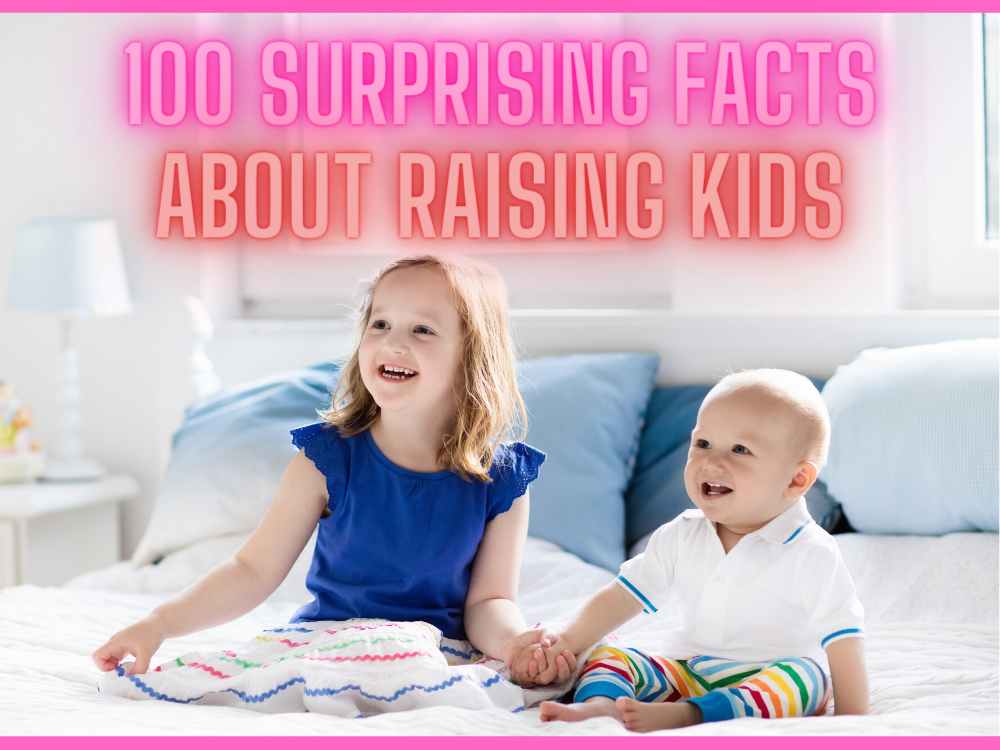
1. 90% of kids say they are happy all the time. This is a survey of 4,200 kids in 12 countries. (Happify)
2. Family holds the primary reason why kids are happy. This is followed by friends, playing, participating in sports, and toys, respectively. (Happify)
3. Denmark, Sweden, and Norway are the best three countries for raising kids. The global ranking was based on eight factors: human rights, family-friendly, non-biased gender environment, kids being happy, income equality, safe place to live, well-structured public education, and health care system. (U.S. News, 2020)
4. Americans enforce their kids to go to sleep early while Spain lets them stay up until 10 pm. One of the sleeping practices around the world, Spanish parents believe it helps kids learn how to socialize. (Insider, 2018)
5. The USA ranks fifth place for the happiest place for kids to live in. In a study of 12 countries, the frontrunner is Mexico, followed by Spain, Brazil, and Germany, respectively. (Happify)
6. Carmel, Indiana, is the top safest city in America to raise a child. With a safety score of 97.13, it is followed by Newton, Massachusetts (97.10), and Johns Creek, Georgia. (97.07). (Safewise, 2019)
7. Meanwhile, California is the safest state to raise a child, with 14 cities on the list, followed by Texas with seven cities, and then Georgia, New Jersey, and Arizona are at the same spot with three cities each. (Safewise, 2019)
8. In America, Northwest families spend most on raising a child. As regional variation is observed, it is followed by urban families from the West, South, and Midwest. (Consumer Expenditures Survey, 2015)
9. It is 27% lower to raise kids in U.S. rural areas. This is primarily due to comparatively lower housing, child care, and education expenses in such places compared to the urban Northeast. (Consumer Expenditures Survey, 2015)
10. Two out of three kids live with their parents. About 25% live with their mother, only 5% of them live with their father, and 5% live with neither parent. (U.S. Census, 2018)
11. It takes $12,980 to raise a child from a middle income, two-children, married-couple family. (U.S. Department of Agriculture, 2020)
12. 29% of child-rearing expenses go to housing, followed by food (18%), and child care and education (16%). (U.S. Department of Agriculture, 2020)
13. Americans say the ideal number per family is 2.6. Gallup asked every family since 1936, during which it showed 3.6. The numbers then declined between 1957 and 1978 to 2.5 children, and the same statistic remains to the day. (Gallup, 2013)
14. It is cheaper to raise three or more children than one child. Called “cheaper by the dozen” effect, the average family with more than three kids can have an average expense of 24% per child compared to raising one child and spending 27% per kid. This is due to sharing of bedrooms, larger food in economic quantities, second-hand clothing and toys, and babysitting of younger siblings. (Consumer Expenditures Survey, 2015)
15. The back-to-school season comes with a price tag averaging $501. Compared to the previous year’s $488, 98% of the spending average is for school items such as books, backpacks, and lunchboxes. (Statista, 2017)
16. During the US colonial times, parents provided toys for their children as a form of enjoyment. The older kids were expected to adapt to adult chores and responsibilities. (How to Adult, 2017)
17. In the same American colonial period, babies were not allowed to crawl. Being viewed as “animalistic,” crawling was taboo, and infants were dressed in long gowns–boys included–to prevent them from crawling.
18. In the 1900s, babies were given a lard bath by their parents. Taking place immediately after birth, this bathing method was said to help the umbilical cord fall off. (Gutenberg, 2007)
19. Also, in the 1900s, showing affection was presumed to “spoil” children. Parents were warned against hugging, kissing, or cuddling because it would cause infants to grow into “little tyrants.” (A Handbook of Obstetric Nursing)
20. In the 1920s, parents viewed pink as an appropriate color for boys and blue for girls, and both of them wore dresses! Time Magazine printed a chart in 1927 highlighting these appropriate colors for boys and girls in leading American retailers! (Today I Found Out, 2014)
21. In the 1920s, behaviorists said ignoring the child builds good character. He also advised mothers to be sensible in their interactions with kids. (Psychological Care of the Infant and Child)
22. In 1932, a pamphlet distributed by the U.S. Government recommended that mothers begin potty training their newborns right after birth. Today, practices in toilet training start between 18 months and three years old. (NursingTimes, 2002)
23. In the 1940s, parents living in the city placed babies in cages outside their windows. The reason is for the babies to be exposed to fresh air and sunlight because most families lived in city apartments at the time. (Rare Historical Photos)
24. In the 1960s, kids were recommended to start consuming solid food at two days old. As breast milk formula was deficient post-war, mothers could feed newborns with “cereal with the consistency of putty” and it was to be given before breast milk. (Bringing Up Babies)
25. In the 1970s, parents sent their little girls to school to become elegant young women. In a particular Sears Discovery Charm School, young girls were educated in all things feminine. They learned to turn their awkwardness into finesse by studying how to help each one uncover their unique “looks, movement, speaking, and personality.” (MissAbigail, 2011)
26. In the 1980s, babies were comfortable sleeping on their stomachs. However, in 1992, the American Pediatric Association recommended sleeping on their backside all the time, which significantly reduced SIDS in half. (Pregnancy Book, 1984)
27. In the 1990s, “time out” was a discipline tool. Before the rise of smartphones, time outs were very common, which kids found isolating and boring. (To Spank or Not to Spank, 1994)
28. Teach kids as early as possible. A study for nursery and kindergarten pupils found positive and long-term effects on children’s behavior and social relationships were possible with early cognitive intervention. (American Psychological Association, 2003)
29. Give your kids easy-to-pronounce and bias-proof names. Various research stated that first names could affect their success and employability, career-wise. (Business Insider, 2016)
30. 75% of each meal goes to build your baby’s brain. As your baby grows, so does his nutritional needs! (Unicef, 2018)
31. American parents use 20 billion pieces of disposable diapers every year. According to the Environmental Protection Agency, these diapers account for 3.5 million tons of landfill waste. (PRNewswire, 2016)
32. 15 minutes of play sparks millions of brain connections in babies. According to the LEGO Foundation and the Center on the Developing Child at Harvard University, everyday routines like feeding, dressing, and bathing in their first three years of life can have an impactful cognitive effect later on. (Unicef)
33. Baby talk is the most important language for kids. The baby’s brain develops at a pace never repeated in their first 1,000 days, building their language abilities. (Unicef)
34. Read aloud to babies. Even at three months’ age, parents should encourage kids to point to the pictures in the book and ask questions about the story, and the characters as these can exercise their language and build their language skills. (Unicef)
35. Parents can introduce baby foods at six months. This is the right time when breast milk stops. Nutrient-filled food, except honey, can be given after she is one year old. (Unicef)
36. Brain connections develop until adulthood. Between 1 and 2 years old, there are 2 million brain connections every second. They reach more than 100 million at two years of age. About 50% of these disappear when a person reaches adulthood.
37. The average toddler learns one word in their vocabulary every two hours. At 18 months of age, they are much smarter than you realize. (Luna Family Group Day Care, 2018)
38. “Back-and-forth” talk develops language, grammar, and verbal reasoning skills. The Broca’s area of the brain—which focuses on speech and language processing—was much more active in children who were engaged by parents in these types of conversations. (CNBC, 2019)
39. Kids can’t remember much at three years old. Psychologists call it “infantile amnesia” caused by an overload in the hippocampus, which is responsible for storing long term memories taking out the short-term information. (ZME Science, 2017)
40. A 6-year old child has an average vocabulary of 13,000 words. When they reach adulthood, that number balloons to 60,000. (Luna Family Group Day Care, 2018)
41. Focus more on the kid’s first three years. Kids who receive “sensitive care giving” during these years perform better academically as kids. In their 30s, they develop better interpersonal relationships and academic achievements. (K.Lee Raby, 2015)
42. Imaginative playing prepares kids for school and the real world. Games that integrate the basic lessons of numbers, color, shapes, vocabulary, and reading helps develop readiness skills in kids. (American Psychological Association, 2003)
43. Indoor play stimulates young children! Age-appropriate games like peek-a-boo, see-and-say, ball pass, “I’m going to catch you!” and obstacle races can expand their imagination and create playful moments. (Unicef)
44. At 5, kids can understand the concept of positive thinking. This is learned by watching how their parents react to problems to help them feel better. (Happify)
45. A child’s brain will reach its full size in kindergarten. About 95% of the brain development process doesn’t slow down until they reach their 20s. (Lunafamilygroupdaycare, 2018)
46. A preschooler’s brain tissue uses twice the energy as adults. A 5-year-old’s intake should be 860 calories, and half of it goes to the brain. (Science Daily, 2019)
47. Teach kids about math early on. A survey involving 35,000 preschoolers across the US, Canada, and Europe found that developing math skills in their early stages was beneficial to kids. (Duncan et al., 2008)
48. Kids can laugh up to 300 times a day. Adults, meanwhile, can laugh about 20 times a day. If you want to stay cheerful, surround yourself with little ones!
49. 91% of Americans said that parenting is their greatest joy. Parents of various backgrounds and ethnicity also stated that being a parent is also their biggest challenge. (ZeroToThree, 2016)
50. Children living with parents are more productive. These kids are at least 33% psychologically, academically, behaviorally, and socially equal or better beings. (Breivik & Olweus, 2006)
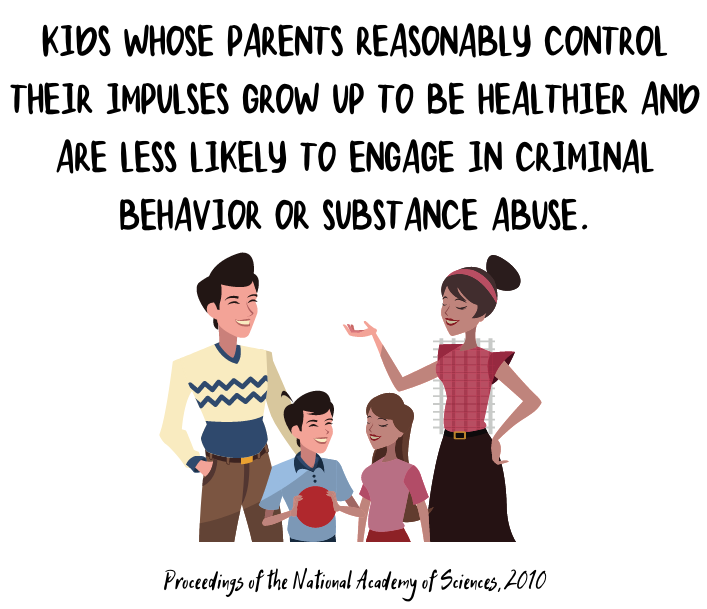
51. 12 million U.S. infants and toddlers are being cared for by someone other than their parents. Since almost two-thirds of mothers are working, center-based child care is being rendered by these little Americans. (ZeroToThree, 2017)
52. Family care is the most common child care arrangement. As there are 86.3% of part-time employed mothers, parents alternate their work schedules to tag team responsibilities. (American Progress, 2012)
53. Being with kids is very valuable to parents. Parents find more meaning in life when spending time with their children than during the rest of the days. (Happify)
54. Eight out of ten Americans believe that parenting can be learned. Also, 69% of them said they are open to other positive parenting strategies. (ZeroToThree, 2016)
55. One-third of Americans seek parental information, advice, and guidance from T.V. This 64% also agree that television shows help them in handling challenging situations positively. (ZeroToThree, 2016)
56. One-fifth of American parents are staying home with their kids. These 11 million were comprised of three-fourths moms and one-fourth dads. (Pew Research, 2018)
57. Parents with open emotions can have a positive effect on kids. According to Washington State University, they can pick up suppressed emotions and want their parent’s fight resolved. (American Psychological Association, 2003)
58. The majority of kid-raisers will adopt one of the four parenting styles. Researchers suggest that either parent will fall as authoritarian, authoritative (the one that yields happy and successful children), permissive, or uninvolved parenting. (Bright Horizons, 2020)
59. Millennial moms and dads spend more time with their children. Compared to parents of previous generations, millennial parents are more enthusiastic about their responsibilities with their children and embrace a “co-parenting” approach. (The Unfinished Revolution: Coming of Age in a New Era of Gender, Work, and Family – 2015)
60. The majority of millennials are saving more for their children. 66% of them are for their kid’s college education, while only 47% of Gen Xers and 35% Baby Boomers did the same. (The Unfinished Revolution: Coming of Age in a New Era of Gender, Work, and Family, 2015)
61. Stay-at-home dads caring for their kids are increasing in the past decades. From 1989 to 2016, there has been a rise of 17% in the number of dads staying home to take care of their children. (Pew Research Center, 2018)
62. Fathers view child-rearing as central to their identity. 54% of dads reported that they see parenting as rewarding all the time, and 46% find it enjoyable. (Pew Research Center, 2015)
63. Dads are more involved in child care now than they were 50 years ago. It was reported that between 1965 to 2016, it was tripled with fathers spending an average of 8 hours weekly in caring for their kids. (Pew Research Center, 2019)
64. Children benefit from having working mothers. Research by Harvard Business School in 24 developed countries found that daughters of mothers working outside the home went to school longer, were more likely to have a job in a supervisory role and earned 23% more money. At the same time, sons spent seven-and-a-half more hours a week on childcare and 25 or more minutes on housework. (New York Times, 2015)
65. Kids with supportive moms have bigger brains. A study in preschools found that kids with nurturing moms have a 10% bigger hippocampus, which is the part of the brain that is responsible for stress and memory. (Happify)
66. 73% of moms say that they are doing an excellent job as a parent. They are also appreciated when they hear words of gratitude and getting compliments. (Happify)
67. A dad’s love matters to children. Being loved by their father is more important for their happiness, well being, and life satisfaction than the love they receive from their mothers. (Happify)
68. Also, a mother’s satisfaction matters to kids. For the young child’s social and emotional skills, their mom’s contentment in life is essential to them. (Happify)
69. A stable support system is critical to raising a well-rounded child. Establishing and maintaining excellent support at home for kids encourages their achievements and ambitions. (Parents)
70. Daycare centers and nursery schools in America are more expensive than tuition fees. For infants and toddlers, center-based child care is as costly than public universities in around 29 U.S. States. (ZeroToThree, 2017)
71. American teachers say that parents should believe in their children more than them in terms of their bad behavior. This will, in turn, make the kids egocentric and give up easily. (HufftingtonPost, 2016)
72. If you have a nanny, you may reconsider having a second kid. A nanny for one child will cost you an average of $565 per week, . (Care, 2020)
73. Babysitters averagely bank $13.44 per hour. The national average, this rate may be higher in expensive cities like San Francisco ($16.65/ hour) and New York ($15.09/ hour). (Marketwatch, 2015)
74. Always let your kids eat with the entire family. Researchers at Columbia University said that children who eat together with their parents at least five meals a week have more chances for achieving higher grades in school and a lesser chance of developing eating disorders. (Parents)
75. One specific parenting style is not suited for all kids. Children get twice as depressed or anxious if a specific parenting approach is not fit for their personality. (Happify)
76. Cuddling with kids can reduce stress. Holding your babies gives a natural surge of love hormone called oxytocin that reduces blood pressure. (Happify)
77. Firstborns are used to being the center of attention. Between ages 4 and 13, the oldest child has approximately 3,000 more hours of quality parenting time than the next sibling. (Parent-Child Quality Time: Does Birth Order Matter)
78. Kids today play less. Compared to two decades ago, children now have eight lesser hours of free, unstructured playtime, so encourage them to play! (Happify)
79. In sports, let your kids feel confident. A higher level of well being is seen in children who think they are good at sports than those who believe otherwise. (Happify)
80. Kids are more resilient than we think. Eight out of ten kids do not suffer from psychological problems after they experience the separation and divorce of their parents. (Happify)
81. Watching TV at a young age is not advisable. Reducing the amount of parent-child communication, kids watching TV at a young age also have poor communication skills, studies show by Ohio State University. (Nathanson and Rasmussen, 2011)
82. Watching TV is associated with unhappiness. Every additional hour of TV watched is more likely to trigger symptoms of depression by 8%. (Happify)
83. Turn off the computer and TV 30 minutes before bedtime. It prepares kids to establish their nightly sleeping routine. (Parents)
84. Spanking kids is not uncommon in the United States. In a study by Brookings Institute, it was found that 70% of Americans spank their kids even with the knowledge that their kids will possibly do the same to their future children later on in life. (Brookings, 2014)
85. In America, the leaving-home age for kids is 18. Meanwhile, children move out at the age of 22 in France, 24 in Poland, and 25 in Spain. (Leopold, 2012)
86. Nearly one-third of American parents make their kids do household chores. Compared to other countries like Romania and Algeria, where two-thirds of children stated they help around the house.
87. Children who spend more time outdoors have a lesser risk of developing myopia. It was cited in a study that playing twice per day outdoors can reduce it by 25%. (PMC, 2018)
88. Take your child’s phone before bedtime. After the lights go out, the study shows that 62% of kids are using it, and their parents are clueless. (Parents)
89. Kids should get quality hours of sleep. In research at Tel Aviv University, one hour’s lack of sleep can reduce their cognitive abilities by almost two years the following day. (Parents)
90. Positive discipline helps kids to learn. Kids who are taught to behave well learn better than those who are scolded for misbehaving. (Unicef)
91. Strict parenting turns kids into more productive and skilled liars. In a study by Psychotherapist Perry, this is because children are afraid to tell the truth. (DailyMail, 2016)
92. Kids who know self-control are more stable. Kids who have parents that reasonably control their impulses grow to be healthier, and less likely to engage in criminal behavior or substance abuse. (Proceedings of the National Academy of Sciences, 2010)
93. Praise your child for his effort and hard work instead of his intelligence or abilities. Author of Parenting Without Power Struggles stated that kids who are praised for hard work are more likely to cope with failure, enjoy challenging tasks, and show more motivation. (Parents)
94. Reinforce positive behaviors than punishing negative ones. Saying “yes,” “good,” and “well done” to children instead of “no,” “bad,” or “not good” boosts their self-esteem. (Unicef)
95. The ability of preschoolers to resist temptation is a better indicator of academic success in the future than I.Q. scores. Known as the “Marshmallow Test,” the research revealed that they show less anger and fear and have higher empathy for others than those who are not. (L.A. Times, 2018)
96. The most important part of a kid’s life is the first five years. This is the time that it forms the brain’s development and functioning that occurs throughout their life. (TheNational, 2015)
97. Children best succeed with at least three supporting adult influences throughout their life. Additionally, positive family, friends, and community support is essential in their development.
98. Teaching kids “grit” to be successful in the long-term. Grit—which means the tendency to sustain interest in and effort toward very long-term goals—correlates with educational attainment and grade point average in Ivy League undergrads, retention in West Point cadets, and rank in the U.S. National Spelling Bee. (Duckworth, 2007)
99. Happy babies grow to become smart kids with high IQ scores. Research revealed that, besides intelligence and wealth, happiness is a factor for kids’ ability and motivation to graduate from college. (Scientific American, 2019)
100. And finally, happy kids are what they are because of happy parents! A Child Trend Analysis study stated that the quality of parental relationship—either married or cohabitating parents—affects a child’s behavioral, social, and emotional relationships. (Childtrends, 2011)
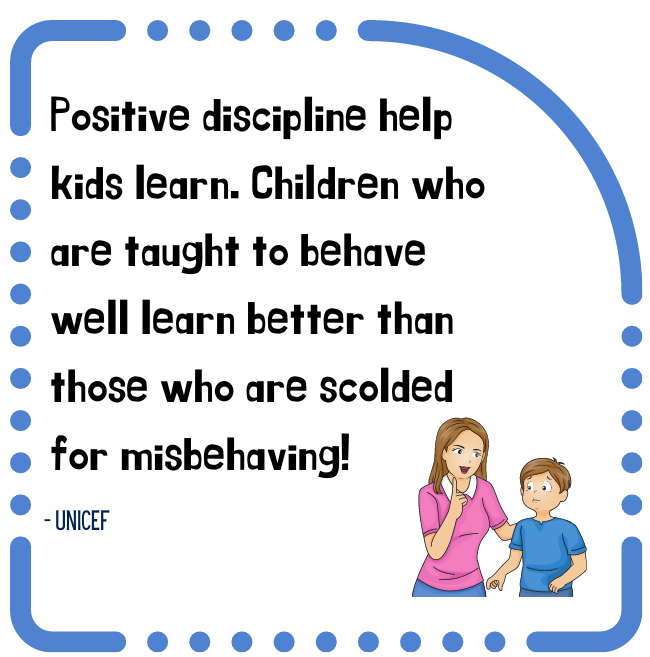
Raising a kid does not come with an instruction manual. True indeed, as they say, that it takes a village to raise a child. So we hope these tips, facts, and statistics can help you become a successful parent and, ultimately, produce an equally successful child in all aspects of growth and development!






